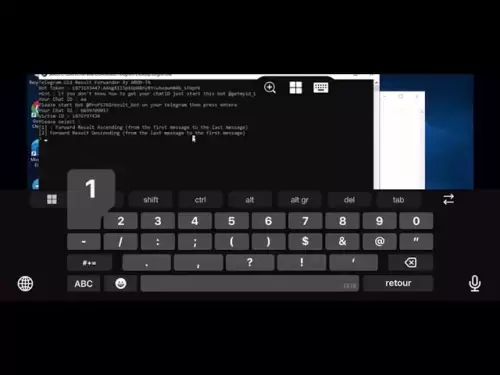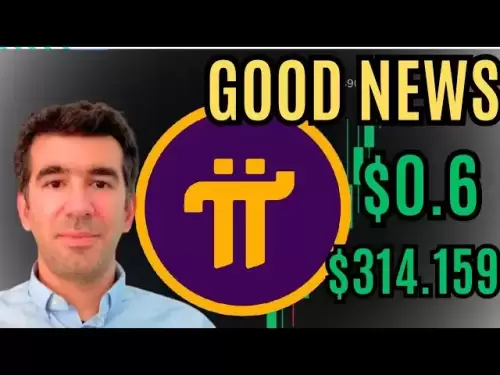-
 Bitcoin
Bitcoin $107,031.8162
-2.52% -
 Ethereum
Ethereum $2,621.4228
-2.51% -
 Tether USDt
Tether USDt $1.0001
-0.04% -
 XRP
XRP $2.2397
-4.12% -
 BNB
BNB $685.2354
-0.57% -
 Solana
Solana $169.7513
-4.44% -
 USDC
USDC $0.9998
0.01% -
 Dogecoin
Dogecoin $0.2178
-4.24% -
 TRON
TRON $0.2742
-0.79% -
 Cardano
Cardano $0.7353
-3.78% -
 Sui
Sui $3.5357
-4.72% -
 Hyperliquid
Hyperliquid $32.8671
-11.41% -
 Chainlink
Chainlink $15.3525
-3.68% -
 Avalanche
Avalanche $22.8728
-2.22% -
 Stellar
Stellar $0.2798
-3.35% -
 Toncoin
Toncoin $3.4068
13.49% -
 UNUS SED LEO
UNUS SED LEO $9.1041
2.33% -
 Shiba Inu
Shiba Inu $0.0...01398
-3.54% -
 Bitcoin Cash
Bitcoin Cash $405.5943
-3.07% -
 Hedera
Hedera $0.1818
-4.36% -
 Litecoin
Litecoin $93.6910
-3.21% -
 Polkadot
Polkadot $4.4305
-2.75% -
 Monero
Monero $349.3281
-8.45% -
 Bitget Token
Bitget Token $5.1994
-3.07% -
 Pepe
Pepe $0.0...01346
-3.80% -
 Dai
Dai $0.9998
0.01% -
 Pi
Pi $0.7211
-3.95% -
 Ethena USDe
Ethena USDe $1.0007
0.00% -
 Uniswap
Uniswap $6.6488
1.82% -
 Aave
Aave $261.6923
-5.14%
Is the double top pattern of RSI a peak signal? How to confirm?
The double top pattern in RSI signals a potential price peak and reversal in crypto markets, crucial for informed trading decisions.
May 26, 2025 at 10:42 am
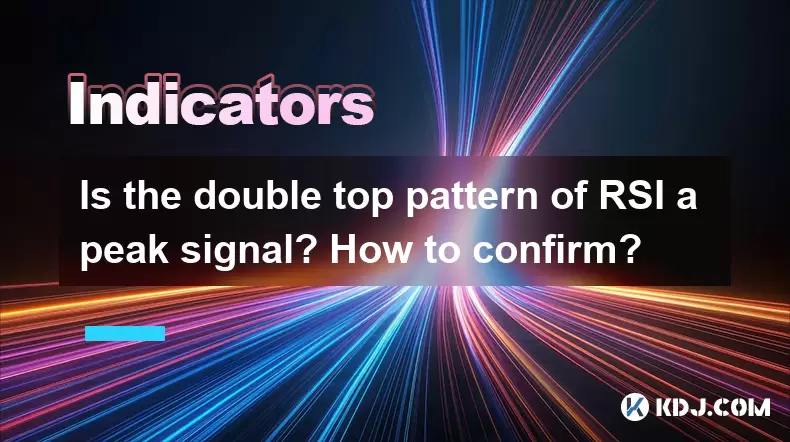
The double top pattern in the Relative Strength Index (RSI) is often considered a significant signal among traders in the cryptocurrency market. This pattern can indicate that a cryptocurrency's price might be reaching a peak and could potentially reverse. Understanding how to identify and confirm this pattern is crucial for making informed trading decisions.
What is the Double Top Pattern in RSI?
The double top pattern in the RSI occurs when the indicator forms two distinct peaks at approximately the same level. This pattern suggests that the upward momentum is weakening, and a reversal might be imminent. The RSI is typically used to measure the speed and change of price movements, and it oscillates between 0 and 100. A reading above 70 is generally considered overbought, while a reading below 30 is considered oversold.
Identifying the Double Top Pattern in RSI
To identify a double top pattern in the RSI, traders should look for the following characteristics:
- Two peaks: The RSI should form two peaks at roughly the same level, usually above 70, indicating overbought conditions.
- Trough between peaks: There should be a trough between the two peaks, signaling a temporary decline in momentum before the second peak forms.
- Break below the trough: A confirmation of the pattern occurs when the RSI breaks below the level of the trough between the two peaks.
Confirming the Double Top Pattern in RSI
Confirming the double top pattern in the RSI involves several steps to ensure the signal's reliability. Here is how traders can confirm this pattern:
- Watch for a break below the trough: The most crucial confirmation signal is when the RSI breaks below the level of the trough between the two peaks. This break suggests that the upward momentum has indeed weakened, and a reversal might be on the horizon.
- Check price action: It's essential to corroborate the RSI signal with the price action of the cryptocurrency. Look for bearish candlestick patterns or a break below a significant support level on the price chart to reinforce the RSI signal.
- Volume analysis: An increase in trading volume as the price breaks down can provide additional confirmation that the trend is shifting.
- Other technical indicators: Using other technical indicators, such as moving averages or the Moving Average Convergence Divergence (MACD), can help confirm the reversal signal from the RSI.
Practical Example of Identifying and Confirming the Double Top Pattern in RSI
Let's walk through a practical example of identifying and confirming a double top pattern in the RSI using a hypothetical cryptocurrency, CryptoX:
- Step 1: Identify the first peak: On the RSI chart of CryptoX, you notice the first peak at an RSI value of 75.
- Step 2: Identify the trough: Following the first peak, the RSI drops to a trough at 60.
- Step 3: Identify the second peak: The RSI then rises again to form a second peak at 74, roughly the same level as the first peak.
- Step 4: Watch for a break below the trough: You keep a close eye on the RSI. Once it breaks below the trough level of 60, this serves as the initial confirmation of the double top pattern.
- Step 5: Check price action: You also monitor the price chart of CryptoX. You observe a bearish engulfing pattern forming as the RSI breaks below 60, adding further confirmation to the signal.
- Step 6: Analyze volume: You notice a significant increase in trading volume as the price of CryptoX breaks below a key support level, reinforcing the likelihood of a trend reversal.
- Step 7: Use additional indicators: You check the MACD, which also shows a bearish crossover, providing further confirmation of the potential reversal.
Potential Pitfalls and Considerations
While the double top pattern in the RSI can be a powerful signal, traders should be aware of potential pitfalls and considerations:
- False signals: Not every double top pattern in the RSI will lead to a significant price reversal. Sometimes, the market might continue its upward trend despite the pattern.
- Context matters: The effectiveness of the double top pattern can vary depending on the broader market context. For instance, during strong bullish trends, the pattern might be less reliable.
- Timeframe: The pattern's reliability can also depend on the timeframe being analyzed. Shorter timeframes might produce more false signals compared to longer timeframes.
Using the Double Top Pattern in Trading Strategies
Incorporating the double top pattern in the RSI into trading strategies can be beneficial for cryptocurrency traders. Here are some ways to use this pattern effectively:
- Entry points: Traders can use the break below the trough as an entry point for short positions, anticipating a price decline.
- Stop-loss levels: Setting stop-loss orders just above the second peak can help manage risk, as a move above this level would invalidate the pattern.
- Profit targets: Identifying potential support levels on the price chart can help set profit targets for the trade.
Frequently Asked Questions
Q1: Can the double top pattern in RSI be used for long positions?
While the double top pattern in the RSI is primarily used to signal potential bearish reversals, it can indirectly inform long positions. For example, if the pattern fails and the price continues to rise, traders might consider entering long positions. However, the pattern itself is not a direct signal for long trades.
Q2: How reliable is the double top pattern in different market conditions?
The reliability of the double top pattern in the RSI can vary with market conditions. In strong bullish markets, the pattern might be less reliable, as the market's upward momentum could overpower the signal. Conversely, in more balanced or bearish markets, the pattern might be more effective.
Q3: Should the double top pattern in RSI be used in isolation?
No, the double top pattern in the RSI should not be used in isolation. It is always advisable to use this pattern in conjunction with other technical indicators and price action analysis to increase the probability of successful trades.
Q4: How does the timeframe affect the double top pattern in RSI?
The timeframe can significantly impact the reliability of the double top pattern in the RSI. On shorter timeframes, the pattern might produce more false signals, while on longer timeframes, the pattern could be more reliable and indicative of significant trend changes.
Disclaimer:info@kdj.com
The information provided is not trading advice. kdj.com does not assume any responsibility for any investments made based on the information provided in this article. Cryptocurrencies are highly volatile and it is highly recommended that you invest with caution after thorough research!
If you believe that the content used on this website infringes your copyright, please contact us immediately (info@kdj.com) and we will delete it promptly.
- Bybit Lists USDC on Aptos, Launches Super Event With Over 20000 APT Up for Grabs
- 2025-05-29 03:35:15
- Troller Cat (TCAT) Presale Nears Stage 7 as Bitcoin Hits $111K
- 2025-05-29 03:35:15
- Crypto prices came under pressure on Tuesday morning as Bitcoin price retreated below $109000
- 2025-05-29 03:30:14
- Solana (SOL) Could Hit New All-Time Highs, Says Investment Advisory Firm
- 2025-05-29 03:30:14
- Mantix Aims to Challenge Hyperliquid's Crown as a Rising DeFi Star
- 2025-05-29 03:25:14
- The emergence of a new decentralised exchange, Mantix, currently in the presale stage, has continued to excite crypto investors and enthusiasts
- 2025-05-29 03:25:14
Related knowledge
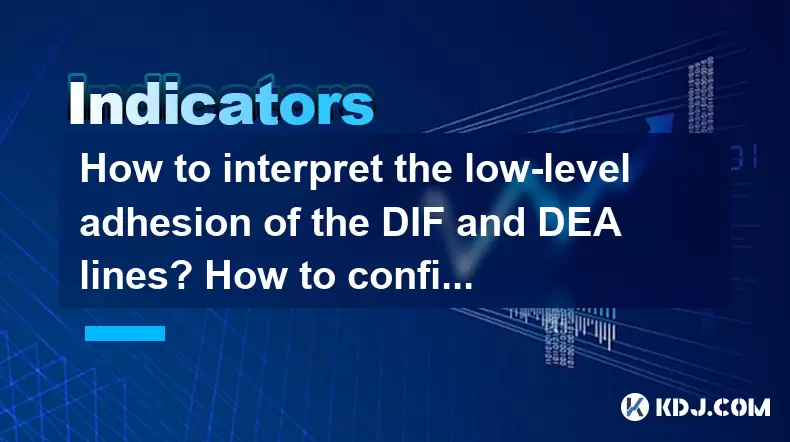
How to interpret the low-level adhesion of the DIF and DEA lines? How to confirm the direction selection signal?
May 29,2025 at 02:49am
Understanding the low-level adhesion of the DIF and DEA lines in the context of cryptocurrency trading involves delving into the specifics of the Moving Average Convergence Divergence (MACD) indicator. The MACD is a trend-following momentum indicator that shows the relationship between two moving averages of a cryptocurrency's price. The DIF line, also ...
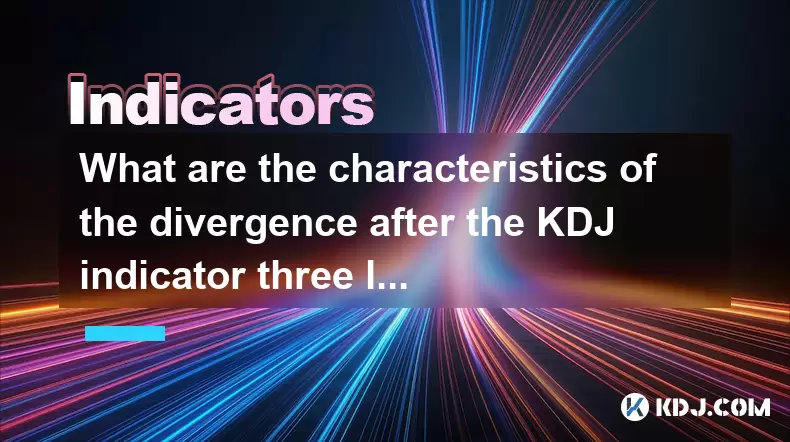
What are the characteristics of the divergence after the KDJ indicator three lines merge into one? What are the direction selection signals?
May 29,2025 at 03:14am
The KDJ indicator is a popular tool used in the cryptocurrency trading community to identify potential trend reversals and to gauge the momentum of price movements. When the three lines of the KDJ indicator—namely the K line, D line, and J line—merge into one, it often signifies a significant event in the market. This phenomenon is known as a divergence...
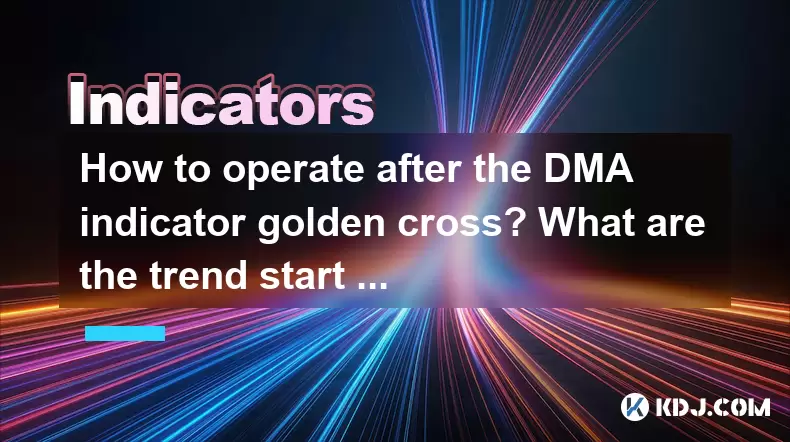
How to operate after the DMA indicator golden cross? What are the trend start signals?
May 29,2025 at 12:21am
How to Operate After the DMA Indicator Golden Cross? What Are the Trend Start Signals? The DMA (Dual Moving Average) indicator is a popular tool among cryptocurrency traders for identifying potential trend changes and entry points. A golden cross on the DMA indicator occurs when a shorter-term moving average crosses above a longer-term moving average, s...
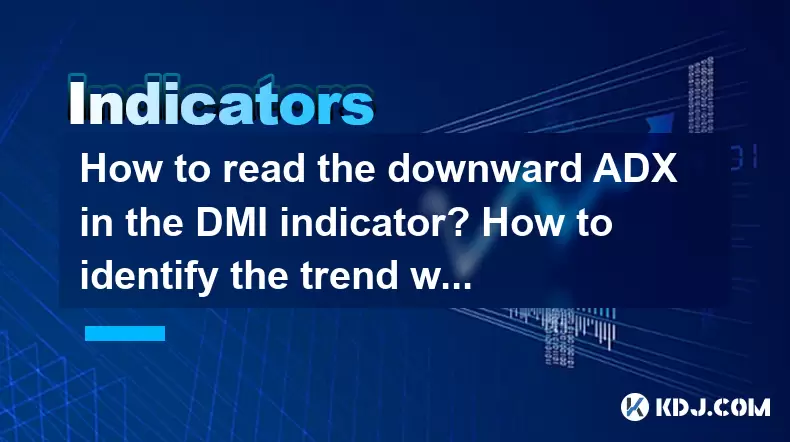
How to read the downward ADX in the DMI indicator? How to identify the trend weakening signal?
May 28,2025 at 10:28pm
The Directional Movement Index (DMI) is a popular technical analysis tool used by cryptocurrency traders to determine the strength of a trend and potential price movements. One of the key components of the DMI is the Average Directional Index (ADX), which helps traders gauge the strength of a trend, whether it's upward or downward. In this article, we w...
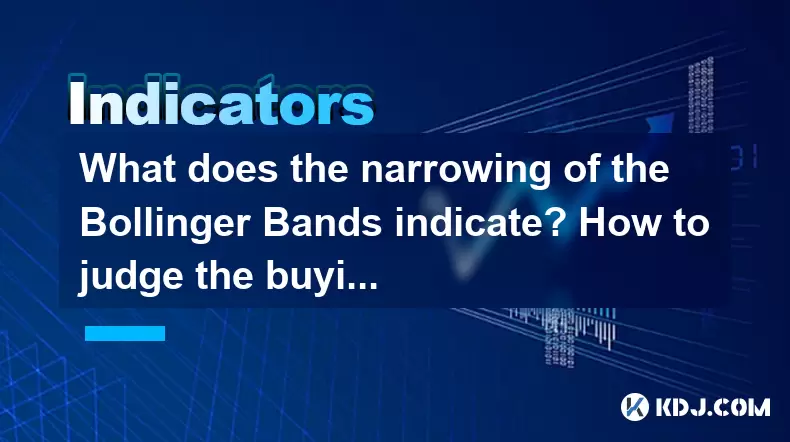
What does the narrowing of the Bollinger Bands indicate? How to judge the buying point after breaking through the lower track?
May 28,2025 at 11:49pm
The Bollinger Bands are a popular technical analysis tool used in the cryptocurrency market to gauge volatility and potential price movements. Understanding the narrowing of the Bollinger Bands is crucial for traders looking to make informed decisions. When the Bollinger Bands narrow, it often signals a period of low volatility and can be a precursor to...
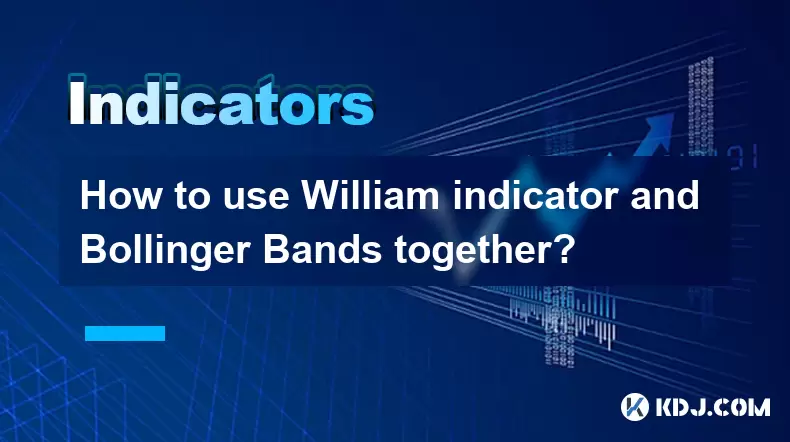
How to use William indicator and Bollinger Bands together?
May 28,2025 at 10:35pm
How to Use the William Indicator and Bollinger Bands Together? The cryptocurrency market is known for its volatility and unpredictability. To navigate this complex landscape, traders often rely on technical analysis tools to make informed decisions. Two popular tools among crypto traders are the William Indicator and Bollinger Bands. When used together,...

How to interpret the low-level adhesion of the DIF and DEA lines? How to confirm the direction selection signal?
May 29,2025 at 02:49am
Understanding the low-level adhesion of the DIF and DEA lines in the context of cryptocurrency trading involves delving into the specifics of the Moving Average Convergence Divergence (MACD) indicator. The MACD is a trend-following momentum indicator that shows the relationship between two moving averages of a cryptocurrency's price. The DIF line, also ...

What are the characteristics of the divergence after the KDJ indicator three lines merge into one? What are the direction selection signals?
May 29,2025 at 03:14am
The KDJ indicator is a popular tool used in the cryptocurrency trading community to identify potential trend reversals and to gauge the momentum of price movements. When the three lines of the KDJ indicator—namely the K line, D line, and J line—merge into one, it often signifies a significant event in the market. This phenomenon is known as a divergence...

How to operate after the DMA indicator golden cross? What are the trend start signals?
May 29,2025 at 12:21am
How to Operate After the DMA Indicator Golden Cross? What Are the Trend Start Signals? The DMA (Dual Moving Average) indicator is a popular tool among cryptocurrency traders for identifying potential trend changes and entry points. A golden cross on the DMA indicator occurs when a shorter-term moving average crosses above a longer-term moving average, s...

How to read the downward ADX in the DMI indicator? How to identify the trend weakening signal?
May 28,2025 at 10:28pm
The Directional Movement Index (DMI) is a popular technical analysis tool used by cryptocurrency traders to determine the strength of a trend and potential price movements. One of the key components of the DMI is the Average Directional Index (ADX), which helps traders gauge the strength of a trend, whether it's upward or downward. In this article, we w...

What does the narrowing of the Bollinger Bands indicate? How to judge the buying point after breaking through the lower track?
May 28,2025 at 11:49pm
The Bollinger Bands are a popular technical analysis tool used in the cryptocurrency market to gauge volatility and potential price movements. Understanding the narrowing of the Bollinger Bands is crucial for traders looking to make informed decisions. When the Bollinger Bands narrow, it often signals a period of low volatility and can be a precursor to...

How to use William indicator and Bollinger Bands together?
May 28,2025 at 10:35pm
How to Use the William Indicator and Bollinger Bands Together? The cryptocurrency market is known for its volatility and unpredictability. To navigate this complex landscape, traders often rely on technical analysis tools to make informed decisions. Two popular tools among crypto traders are the William Indicator and Bollinger Bands. When used together,...
See all articles





















